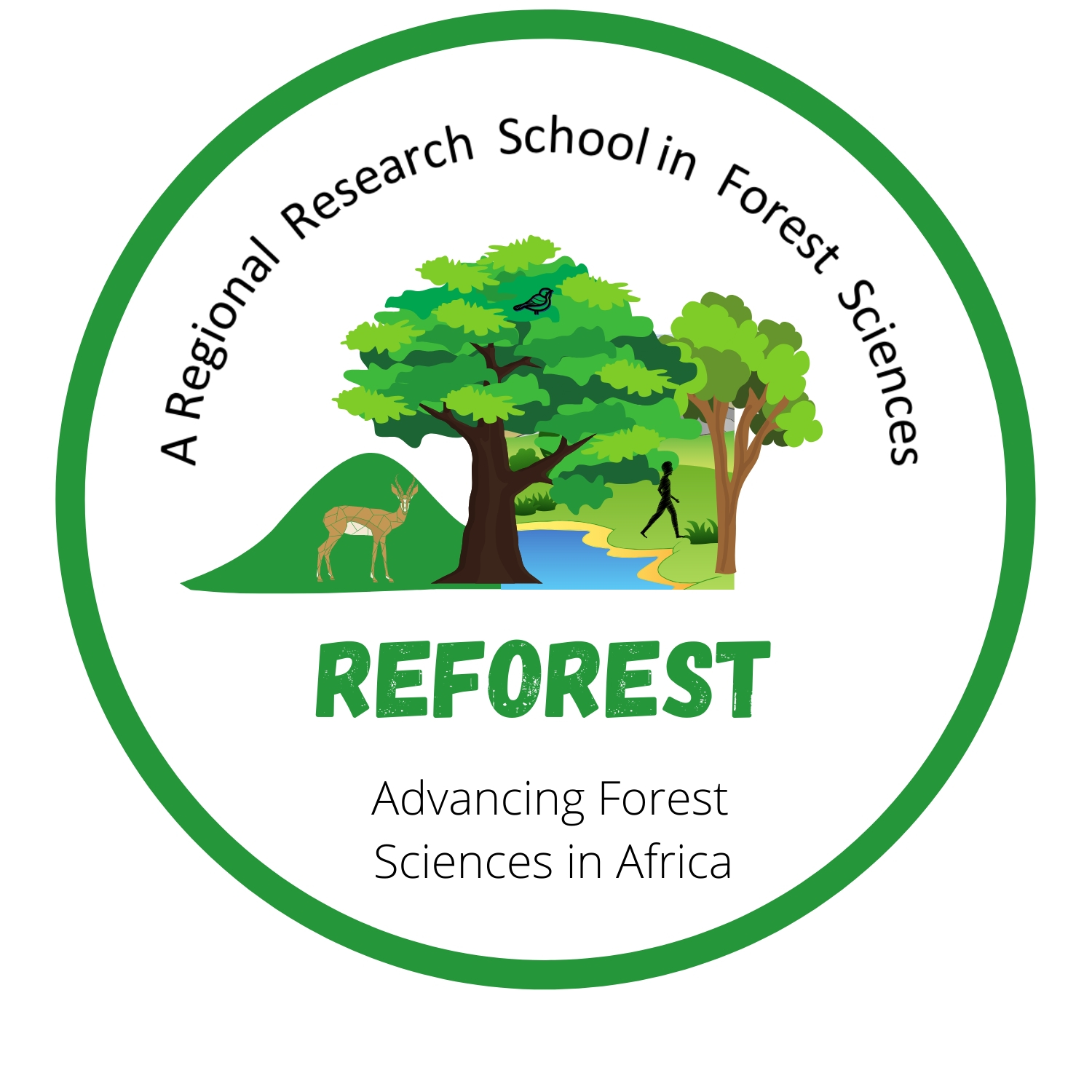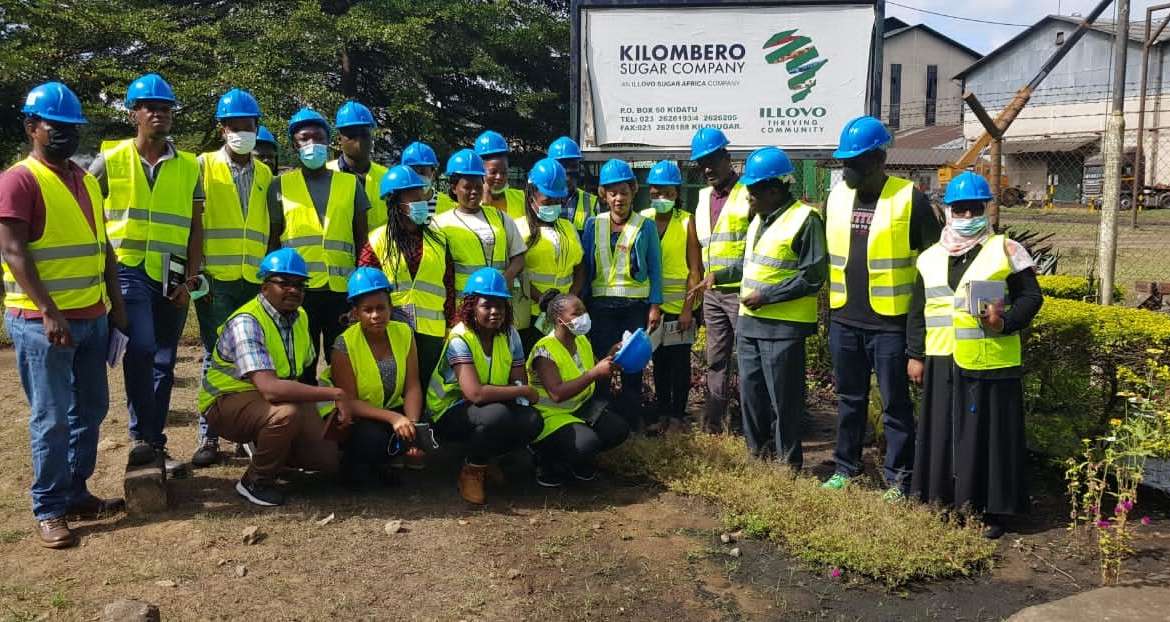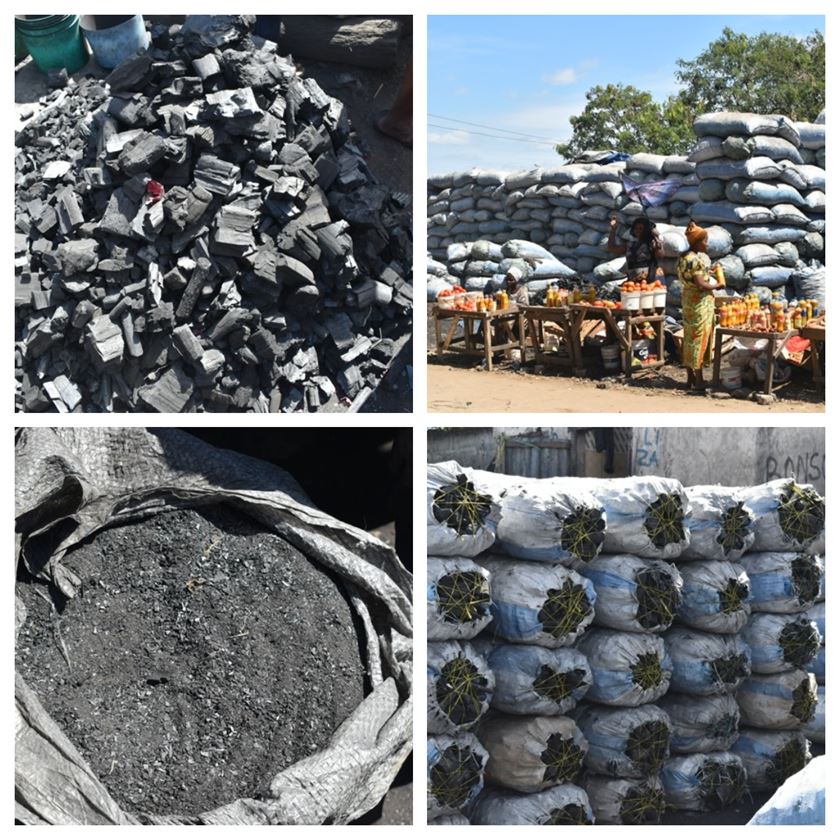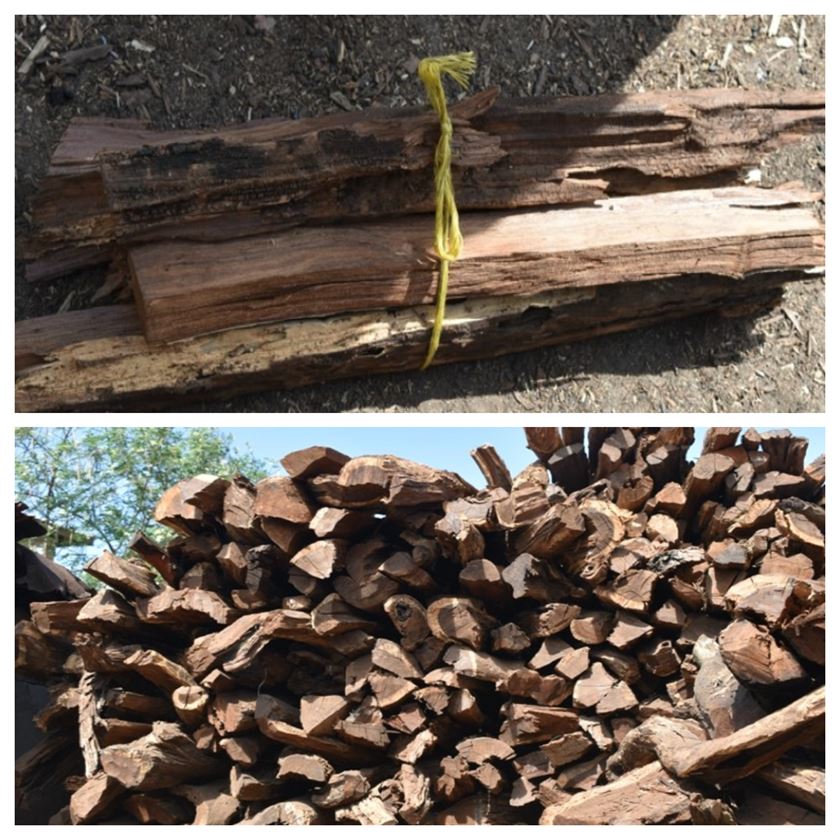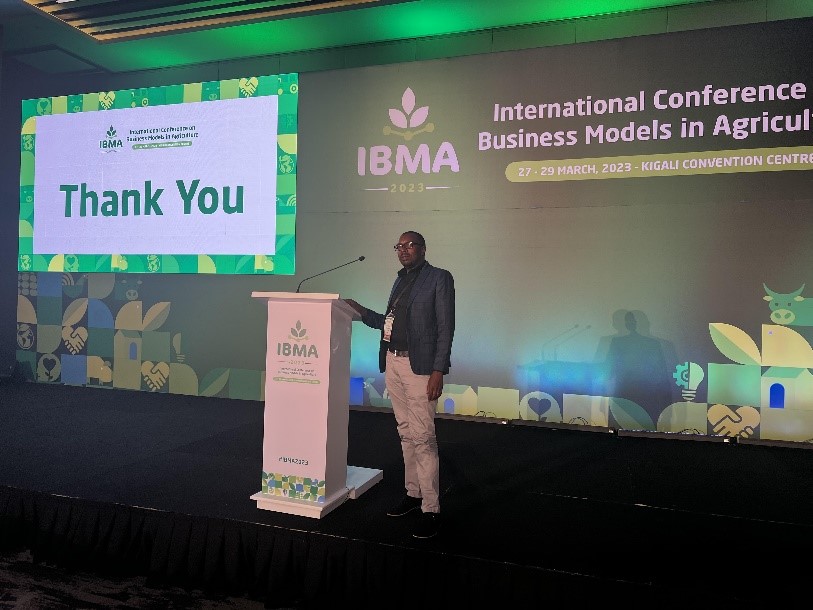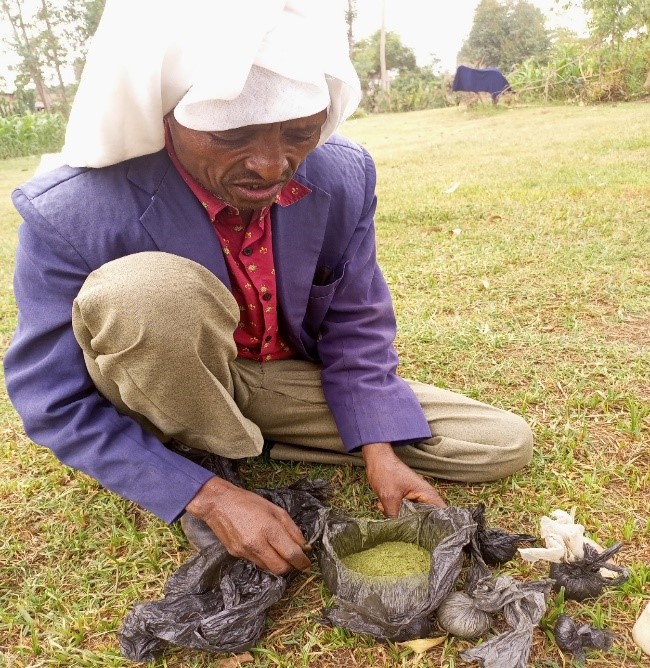Above: REFOREST students and lecturers at Kilombero Sugar Company (Photo credit Alberto Manhica)
Like all developing countries, Tanzania strives to enhance affordable, accessible and environmental friendly energy supply for its socio-economic development. The development of renewable energy has been of great potential in this endeavor as it is cheap and aids in sustainable development. Therefore, Sokoine University of Agriculture, through the REFOREST Programme organized a field excursion on Renewable Energy Systems for the Forest Sciences PhD students at Morogoro and Dar es Salaam regions. The objective of the excursion was to shed light on some practical renewable energy production systems, their economics, social and environmental sustainability.
Kilombero Sugar Company: Bioenergy Production from Baggase
Kilombero Sugar Company generates energy from bagasse (sugarcane residue), which is a source of clean renewable energy. The energy generated is approximately 4.6 MW which is used to meet all the requirements of the company. In a few cases, this energy is complemented by electricity from the Tanzania national grid (TANESCO).
The presence of the company has stimulated sugarcane farming in areas of Ruaha and Kidatu and thus improving the local standard of living and providing livelihood diversification. Farmers have used sugarcane payments to build better houses, fund other crops, and educate their children. The company also complies with legal requirements by paying tax annually and implementing Corporate Social Responsibility to the local community via a contribution towards health and school facilities construction. The use of baggase is environmentally friendly, saves costs of operation, and is also considered carbon neutral. It reduces greenhouse gas emissions and lowers the risk of soil and water acidification.
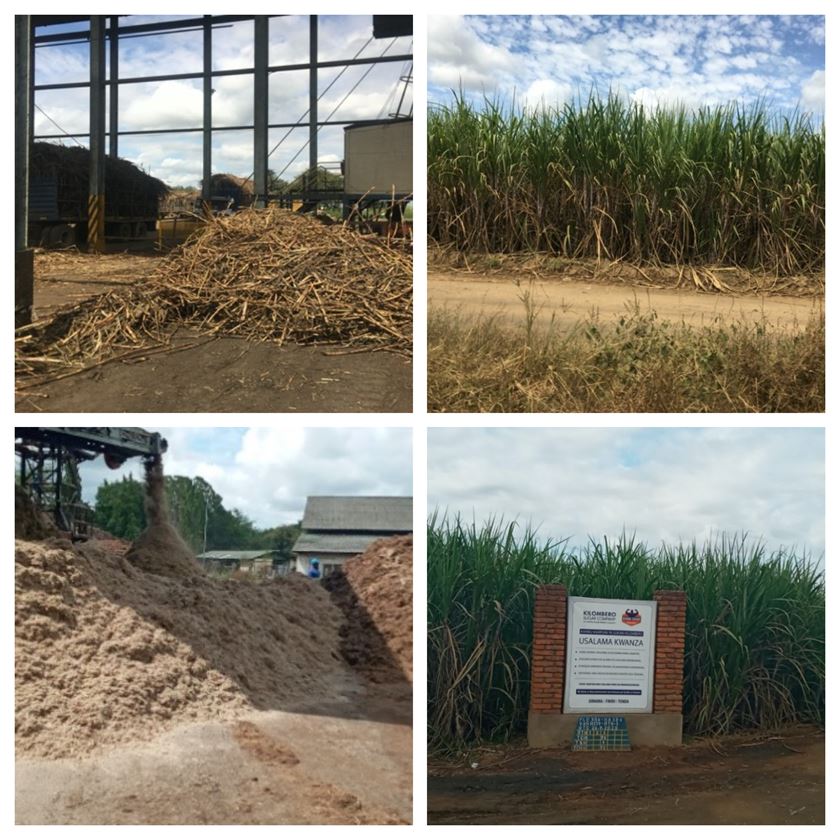
Bioenergy production at Kilombero Sugar Company (Photo credit: Scolastica Justine)
Kidatu Hydropower Plant
Hydropower is a renewable energy source which contributes to electricity production in Tanzania. Kidatu Hydropower Plant (KHPP), supplies 200 MW to the total electricity generated in the country. The hydropower plant is located on the Great Ruaha River in Kilombero District- Morogoro Region. Power generation depends on the quantity and flow of the water, KHPP has a reservoir dam with capacity of 125 million m3. The role of tree cover in hydropower generation is essential as it contributes to proper watershed management, sustain the water flow and reduce siltation problems.
Bioenergy production, licensing and trade (charcoal and fuelwood)
The bioenergy value chain employs all gender and age groups in Tanzania hence, plays a critical role in the livelihoods of both urban and rural people. Not only is it a source of income to the people involved along the value chain but also a source of revenue to the government of Tanzania in the form of taxes collected by the Tanzania Forest Services.
Charcoal production is a lucrative business as 90% of the population in urban areas demands charcoal for cooking. This is evident from the high traffic of motorcycles carrying charcoal bags to Dar Es Salaam. Production of charcoal is carried out using traditional kilns, which are inefficient and tedious in operating, this inefficient production leads to unsustainable use of trees and forests which in the long run is a driver of forest degradation and deforestation. To ensure sustainable charcoal production and conservation of forest, checkpoints are setup to verify if the transported charcoal is produced according to the forest guidelines. This was observed at Kauzeni checkpoint in Kisarawe District. Furthermore, there is a need to promote the use of improved charcoal kilns at the local level.
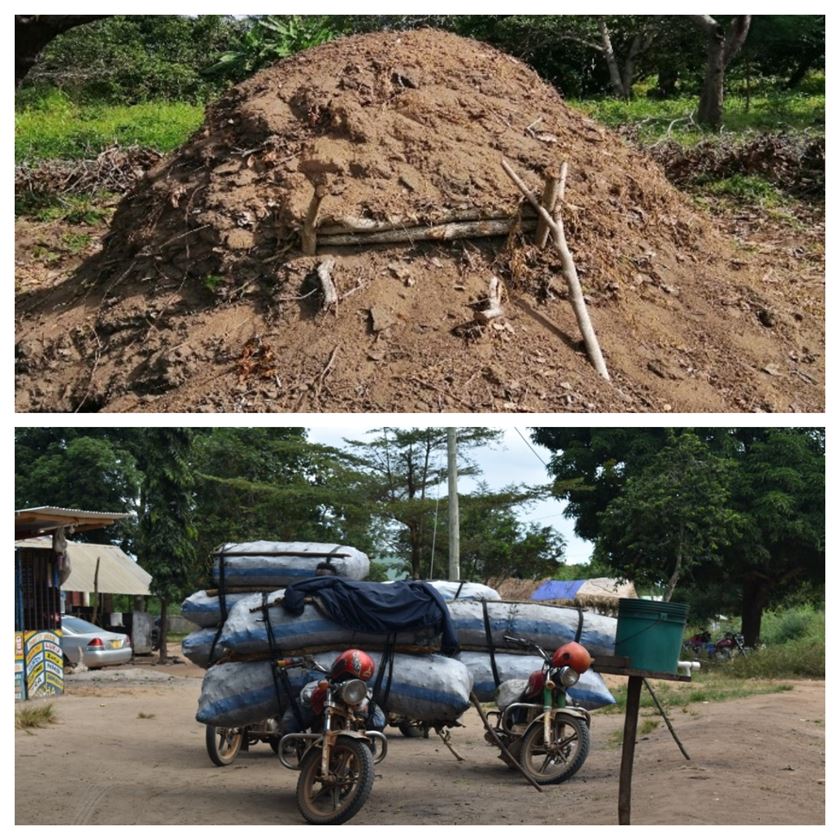
Traditional kiln (charcoal making) and charcoal transportation in Dar es Salaam (Photo credit: Scolastica Justine)
Firewood and Charcoal marketing centers at Dar Es Salaam
Charcoal and firewood are like other crop commodities sold in the marketplace. Registered stores sell charcoal and firewood in wholesale and retail. The charcoal sold in the market centres in Dar es Salaam is from miombo woodland and plantations of Black wattle (Acacia mearnsii), however, prefered firewood is from the natural trees including; Spirostachys africana (Mcharaka).
Charcoal derived from the miombo woodland is considered of high density and calorific value. Thus, it fetches a higher price of TZS 35,000 per bag compared to TZS 28,000 per bag of charcoal produced from wattle plantations. The demand for charcoal is high as each visited stalls reported selling approximately 50-70 charcoal bags, each weighing 60-70 kg. Some of the charcoal traders are innovatively sorting charcoal and selling it in different particle sizes and different markets to ensure that nothing goes to waste.
Apart from local household demand fuelwood is also used at an Industrial scale. The use of fuelwood at industial scale was observed at Fresh Food Ltd at Tegeta, Dar Es Salaam. The factory uses fuelwood in the boiler system to generate steam, which is used as energy in the production of juice. The company uses approximately 10 – 12 m3 of firewood per day and recognized that fuelwood usage is cheaper than electricity. The company obtains firewood from the dealers who have harvesting permits from Tanzania Forest Service (TFS) productive forests in Chalinze District, Pwani Region.
Charcoal marketing center at Mabibo with different assortment (Photo credit: Scolastica Justine)
Fuel wood used as Bioenergy (Photo credits: Alberto Manhica)
Briquette making at Agricycle Tanzania Inc
Briqquets are another form of fuel used in the energy sector. These brequetts are made from agricultural waste such as coconut and palm oil seed shells as observed at Agricycle Tanzania Inc. The production involves (i) carbonization of coconut shells and palm nut (ii) crushing of carbonized material into powder (hammer crusher or roller crusher to crush the carbonized wood) (iii)Binding using prepared cassava flour syrup, as cassava is easily obtained (iv) Molding of briquette into shapes (v) sun drying and (iv) packing into boxes. The use of agri-fuels in one of the ways to reduce pressure on natural forests and woodlands, thus enhancing forest conservation and climate change adaptation.
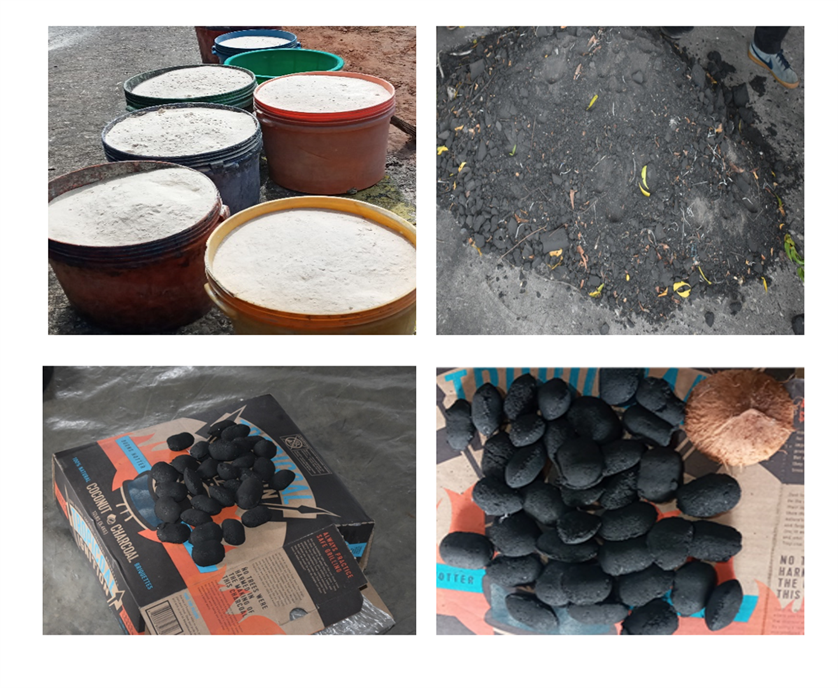
Briquettes produced at Agricycle Tanzania (Photo credit: Hadia Seid)
The Tanzanian energy sector recognises the importance of renewable energy sources such as hydro, biomass, geothermal and solar in propelling the economy. It is important to understand the interwoven relationships between energy, economy, and environment as these relationships are essential for informing policy and strategies of sustainable utilization of these resources. Note that as we exploit these energy resources for economic growth, strategies on how to sustainably utilize them is key on the environment.
Prepared by REFOREST Programme Students
